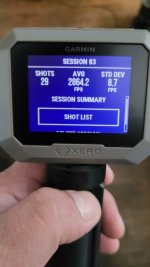William Suter
Well-known member
How many of you anneal your brass? I know it is a major part of reloading and all these years I've spent reloading I have never owned one. I have a friend that has one I can use but its a PITA going to his house to work on brass and he's kind of a PITA to be around very long to. To many BS stories you have to listen to while your working on brass that you know aren't true. But, I do notice after resizing brass that is not annealed some bullets seat easy and some take a little more pressure to seat a bullet. I'm thinking this may be because the brass is getting hard. Which also makes me think I'm not getting the same neck tension on each bullet. I'm (kinda) sure that effects accuracy somewhat. What are your thoughts? Am I thinking correctly and is annealing going to improve my neck tension? I don't use bushing dies and I'm sure that will help but hate to start all over again replacing dies. Now I'm in the process of trimming to length 243 cases. Another process I have grown to hate. I know a lot of shooters just trash their brass when problems arise but my pockets aren't that deep these days. I use my brass till its not usable any longer. (Just rainy day thoughts from an old fart that is taking a break from trimming brass.)


